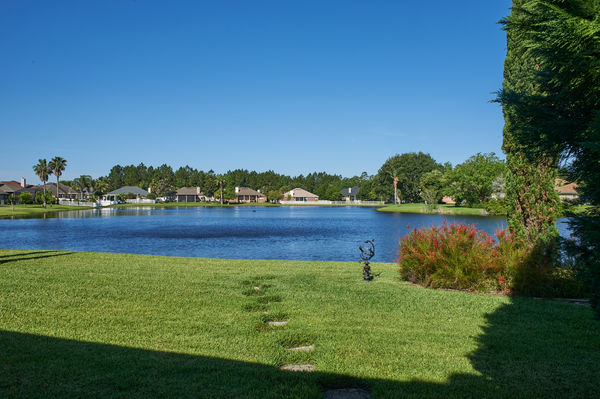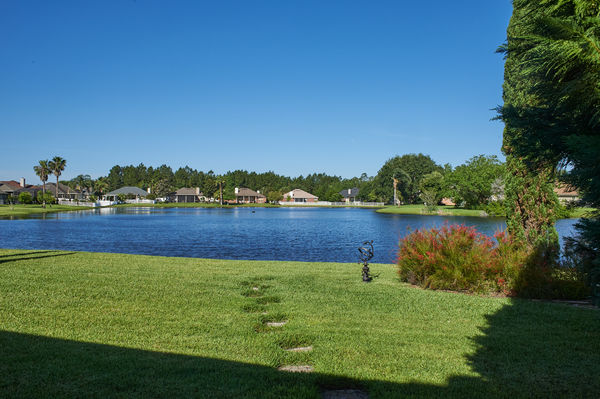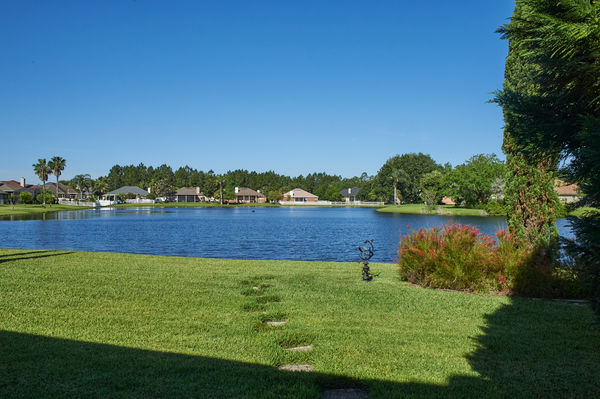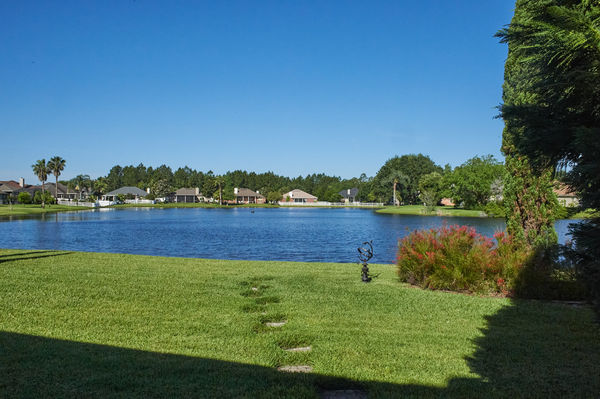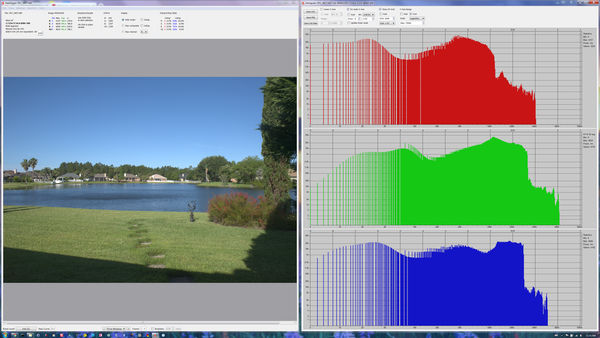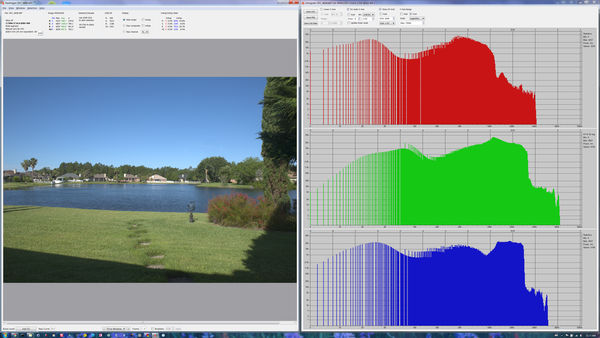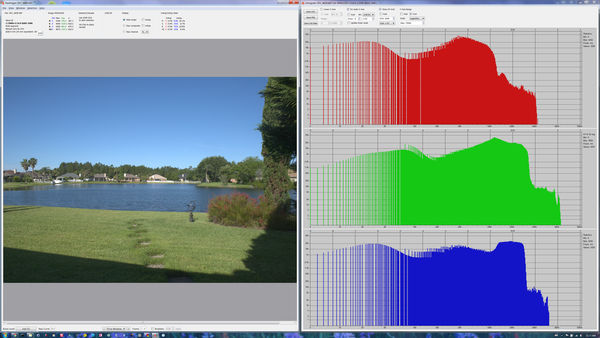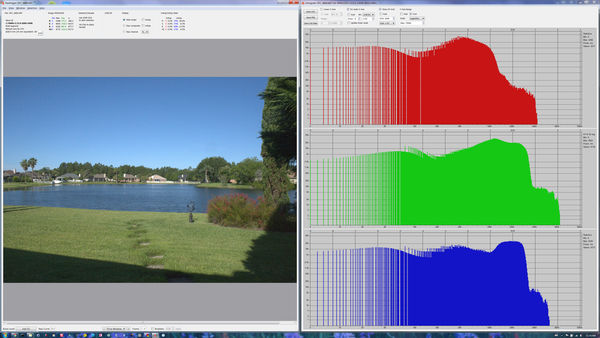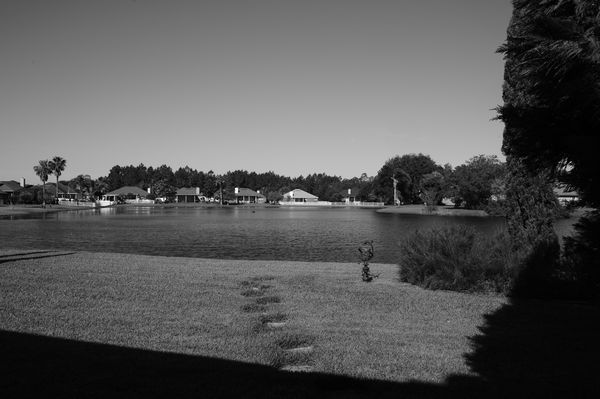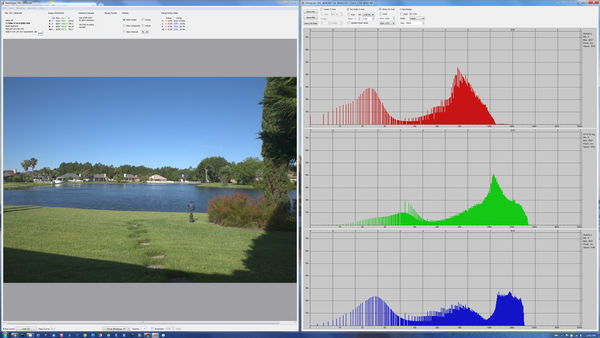Does ISO Affect Landscape Image Quality
Apr 29, 2020 11:49:57 #
Apparently not.
It only affects the amount of exposure needed. That will cause you to adjust the shutter speed, aperture or both. Either of those adjustments will change the effect of camera shake or subject movement and/or the depth of field.
There may be a slight difference in the way that the shadows are rendered but that is easily adjusted with post processing.
There may also be a little more noise as the ISO increases. But try to find it. You will need to look really close at more than 100%.
To see this I took four hand-held exposures using the same light value (LV=15) setting with a Nikon Df and a 29mm f/2.8 AIS lens:
ISO 100 1/125 @ f/11
ISO 400 1/500 @ f/11
ISO 1600 1/2000 @ f/11
ISO 6400 1/4000 @ f/16 (I could not use 1/8000 so I had to stop down)
The images SOOC were B&W so I had to pass the raw files through Capture One to get a color version. I applied the exact same amount of shadow recovery to each of them.
The images are in the next post.
It only affects the amount of exposure needed. That will cause you to adjust the shutter speed, aperture or both. Either of those adjustments will change the effect of camera shake or subject movement and/or the depth of field.
There may be a slight difference in the way that the shadows are rendered but that is easily adjusted with post processing.
There may also be a little more noise as the ISO increases. But try to find it. You will need to look really close at more than 100%.
To see this I took four hand-held exposures using the same light value (LV=15) setting with a Nikon Df and a 29mm f/2.8 AIS lens:
ISO 100 1/125 @ f/11
ISO 400 1/500 @ f/11
ISO 1600 1/2000 @ f/11
ISO 6400 1/4000 @ f/16 (I could not use 1/8000 so I had to stop down)
The images SOOC were B&W so I had to pass the raw files through Capture One to get a color version. I applied the exact same amount of shadow recovery to each of them.
The images are in the next post.
Apr 29, 2020 11:53:44 #
You may only see a change in the ripples.
Apr 29, 2020 11:57:05 #
And the raw files all look the same except for the ripples. Only the EXIF values change.
Note that all of these exposures left nearly a full stop of margin before reaching the right end of the camera's DR.
Note that all of these exposures left nearly a full stop of margin before reaching the right end of the camera's DR.
Apr 29, 2020 12:02:50 #
Apr 29, 2020 12:06:01 #
BebuLamar wrote:
Significantly more noise in the ISO 6400 compared to the ISO 100.
Significant? There is a little more but whether it's significant depends on how much you pixel peep.
It won't show up on a 13x19 print. That's what I see when I open the images in my 27" monitor using Windows Photo Viewer.
Apr 29, 2020 12:06:42 #
zug55
Loc: Naivasha, Kenya, and Austin, Texas
Generally you lose image quality as you increase your ISO settings. High-end digital cameras handle it quite well, as your examples show. But if you look closely you see that you have more noise in your 6400 ISO image, and you lose a lot of microcontrast. Look at the blooming shrub: it is much better defined at 100 than at 6400. Edges are also more poorly defined at 6400. A closer look indicates that your theory does not hold up.
Apr 29, 2020 12:06:52 #
Ysarex
Loc: St. Louis
With most cameras increasing ISO reduces the sensor's capacity to record dynamic range. Depending on the landscape, that could be a significant difference.
Joe
Joe
Apr 29, 2020 12:09:57 #
zug55 wrote:
Generally you lose image quality as you increase your ISO settings. High-end digital cameras handle it quite well, as your examples show. But if you look closely you see that you have more noise in your 6400 ISO image, and you lose a lot of microcontrast. Look at the blooming shrub: it is much better defined at 100 than at 6400. Edges are also more poorly defined at 6400. A closer look indicates that your theory does not hold up.
The loss in contrast was not due to the ISO. It's because I closed the aperture to f/16. The others were all at f/11 which is just about the diffraction limit.
Apr 29, 2020 12:16:37 #
Ysarex wrote:
With most cameras increasing ISO reduces the sensor's capacity to record dynamic range. Depending on the landscape, that could be a significant difference.
Joe
Joe
At least that the theory.
But as the RawDigger plots show, this scene has a wide dynamic range.
Can you see a loss of DR in the image? If you can't see it, it is irrelevant.
Just to get the colors out of the way, here is the ISO 400 JPEG SOOC. Without the shadow recovery you can see how wide the spread is from the deep shadows to the white chimneys across the pond.
Apr 29, 2020 12:31:37 #
From personal experience it will also be very much dependant on the camera you are using.
Apr 29, 2020 12:32:43 #
Ysarex
Loc: St. Louis
selmslie wrote:
At least that the theory.
It's not a theory it's a simple fact: https://www.photonstophotos.net/Charts/PDR.htm#Nikon%20Df
selmslie wrote:
But as the RawDigger plots show, this scene has a wide dynamic range.
It's front lit by full sun on a clear day -- that is not a wide dynamic range. That's a normal dynamic range landscape. A backlit landscape would be a wide dynamic range.
Joe
Apr 29, 2020 12:36:33 #
zug55
Loc: Naivasha, Kenya, and Austin, Texas
selmslie wrote:
The loss in contrast was not due to the ISO. It's because I closed the aperture to f/16. The others were all at f/11 which is just about the diffraction limit.
Look at the portions of your image that are in the shade: you see a load of noise at 6400. That is not diffraction. Another reason why it is a bad idea to shoot at a high ISO is that you lose the ability to edit in post. If you need to brighten dark areas noise will be right there. I have taken plenty of shots in poor light at ISO 6400 (with a Sony A7 III) but editing these is a real challenge. None of this is news. There is a reason why the exposure triangle is one of the basic principles of photography.
Apr 29, 2020 12:45:51 #
Ysarex wrote:
It's front lit by full sun on a clear day -- that is not a wide dynamic range. That's a normal dynamic range landscape. A backlit landscape would be a wide dynamic range.
Joe
Joe
The grass in the foreground is only sky-lit. That's about 3 stops darker than sunlight. You need to add those three stops to the "normal" dynamic range of a front-lit landscape.
Besides, you can see in the RawDigger plots that the DR is pretty wide, about 8-9 stops if you consider all three colors.
Here is a linear plot that shows the distribution more proportionally:
Apr 29, 2020 13:00:55 #
zug55 wrote:
Look at the portions of your image that are in the... (show quote)
You only see a lot of noise if you look really close. A landscape at normal magnification and viewing distance it's just not apparent.
I do not go above ISO 400 shooting in daylight and seldom open wider than f/11 which gives me a shutter speed of 1/1000. Noise is the least of my problems.
I would never shoot a daytime landscape at ISO 6400. It's unnecessary.
Here is an image I shot ad dusk, ISO 400 1/250 @ f/11. That's an extra 2 stops and no problem digging out the shadow detail. After all, I wanted to keep them dark.
The exposure was determined by the brightness of the sky. At 100% you can see some noise but that would be a print larger than 24x36. At 12x18 you can't see it.
And at ISO 100 I would have lowered the exposure to 1/60. Then the 24x36 print would be as clean as this one is at 12x18.
Apr 29, 2020 13:22:47 #
selmslie wrote:
You only see a lot of noise if you look really close. A landscape at normal magnification and viewing distance it's just not apparent.
I do not go above ISO 400 shooting in daylight and seldom open wider than f/11 which gives me a shutter speed of 1/1000. Noise is the least of my problems.
I would never shoot a daytime landscape at ISO 6400. It's unnecessary.
I do not go above ISO 400 shooting in daylight and seldom open wider than f/11 which gives me a shutter speed of 1/1000. Noise is the least of my problems.
I would never shoot a daytime landscape at ISO 6400. It's unnecessary.
Given your original question [Does ISO Affect Landscape Image Quality], then limiting your ISO range to below 400, this seems a bit tedious to me. And saying that "You only see a lot of noise if you look really close. A landscape at normal magnification and viewing distance it's just not apparent." is kinda like saying "As long as you only print 4x6s there is no difference." The "Noise" is definitely there. Even my aging eyes can see it.
If you want to reply, then register here. Registration is free and your account is created instantly, so you can post right away.

